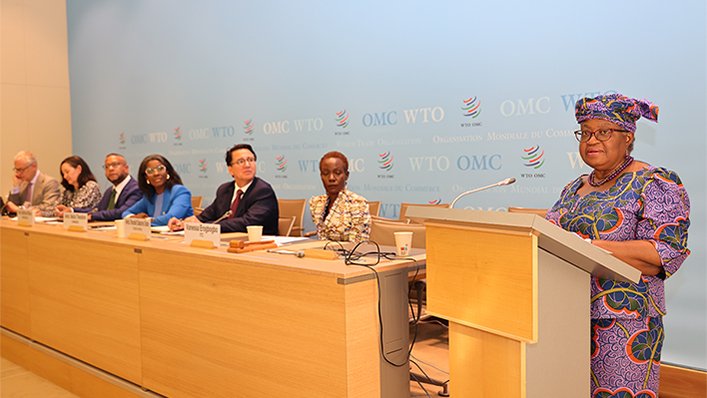Organisational rights refer to the rights that a registered trade union can exercise within a workplace. These rights enable unions to organize and represent workers, allowing them to enter the employer’s premises, hold meetings with employees, and advocate for their interests.
The Importance Of Organisational Rights In The Workplace
The importance of organisational rights in the workplace cannot be overstated. These rights play a crucial role in protecting the interests and well-being of employees. One significant aspect of organisational rights is the representation of employees through trade unions. When workers are part of a union, they have a collective voice and are better able to negotiate for fair wages, benefits, and working conditions. Collective bargaining is another essential component of organisational rights. It allows employees to come together and negotiate with their employers as a unified force, strengthening their position and increasing their chances of achieving favorable outcomes.
Organisational rights also ensure that employees are treated fairly and prevent exploitation in the workplace. They provide a framework for resolving disputes and addressing grievances, promoting a harmonious work environment. Furthermore, organisational rights empower minority unions, allowing them to bargain for their members’ rights and interests, regardless of their size or membership thresholds. Overall, organisational rights are vital for safeguarding workers’ rights, promoting equity, and fostering a collaborative and productive work environment.
Types Of Organisational Rights
Organisational rights in the workplace refer to the rights that a registered trade union may exercise to organize and represent workers. These rights are aimed at providing a platform for unions to effectively advocate for the interests of their members.
One type of organisational right is collective bargaining agreements. These agreements allow unions to negotiate with employers on behalf of their members regarding issues such as wages, working conditions, and benefits.
Another important organisational right is the right to unionize and join labor organizations. This ensures that employees have the freedom to form and join unions of their choice, without fear of discrimination or retaliation.
Employee representation and participation rights are also significant. These rights give employees the opportunity to have a voice in decision-making processes within the organization, through mechanisms such as employee forums or works councils.
Lastly, bargaining unit determination is a crucial aspect of organisational rights. It involves defining the group of employees that will be represented by a particular union for collective bargaining purposes.
In conclusion, organisational rights play a crucial role in ensuring fair and equitable treatment for workers. They provide avenues for collective representation, negotiation, and participation in decision-making processes within the workplace.
Legal Framework For Organisational Rights
The legal framework for organisational rights is vital for protecting and regulating the rights of workers and trade unions. In the United States, the National Labor Relations Act (NLRA) is a significant piece of legislation that guarantees the right of employees to organize and bargain collectively. It establishes procedures for conducting union representation elections and defines unfair labor practices. Additionally, international labor standards and conventions provide a foundation for ensuring workers’ rights globally.
Note that organisational rights refer to the rights that a registered trade union can exercise in the workplace. These rights empower unions to organize workers, represent their interests, and bargain with employers. They may include access to the employer’s premises for recruitment and communication purposes, holding meetings with employees outside working hours, and more.
The Process Of Unionization
Organizational rights refer to the rights that a registered trade union has to organize and represent workers in the workplace. The process of unionization involves several steps. Firstly, labor organizations and union leaders play a crucial role in advocating for the interests of employees and promoting the need for unionization. Secondly, there is a voting process where employees decide whether they want to be part of a union. If the majority of employees vote in favor, the union is certified. Once certified, the union can then proceed to negotiate with the employer for collective bargaining and the granting of organizational rights. These rights may include accessing the employer’s premises for recruitment and communication, as well as holding meetings with employees outside of working hours. Overall, the establishment of a union requires the active participation of labor organizations, the support of employees through voting, and the certification of the union.
Collective Bargaining Process
Collective bargaining process refers to the negotiations between an employer and a union on behalf of its members to determine terms and conditions of employment. Organizational rights play a crucial role in this process, ensuring that unions have the ability to organize and represent workers in the workplace.
Collective Bargaining Process
|
Challenges And Controversies Surrounding Organisational Rights
Organisational rights in the workplace can be a contentious issue, with various challenges and controversies surrounding them. One primary challenge is employer resistance and anti-union campaigns. Employers may oppose granting organisational rights, fearing a loss of control or increased costs. They may actively campaign against unions, using tactics such as intimidation or misinformation.
Another challenge is the legal aspect, with court rulings determining the extent of organisational rights. Different jurisdictions and legal systems have varying interpretations and requirements for granting these rights.
Public opinion and the political climate also play a role in shaping the controversies surrounding organisational rights. Some people view unions as essential for protecting workers’ rights and promoting fairness, while others see them as disruptive or unnecessary.
In conclusion, the challenges and controversies surrounding organisational rights involve employer resistance, legal battles, and differing public opinions. Finding a balance between the interests of employers, unions, and workers is crucial in navigating these complex issues.
The Impact Of Organisational Rights On Workplaces
Organisational rights have a significant impact on workplaces, positively affecting various aspects of work environments. One of the key benefits is improved working conditions and fair wages for employees. With organisational rights, trade unions can advocate for better pay and benefits, ensuring that workers are adequately compensated for their efforts.
A well-represented trade union with organisational rights also leads to higher employee satisfaction and morale. Employees feel supported and valued when their interests are represented, leading to a more positive work atmosphere and increased job satisfaction.
Furthermore, the presence of trade unions and organisational rights can enhance productivity and overall organizational performance. When workers’ concerns are addressed and their needs are met, they are more motivated and engaged in their work, leading to higher productivity levels within the organization.
Overall, the implementation of organisational rights in workplaces has a profound impact on both employees and organizations, creating a fair and harmonious work environment where employees’ rights are protected and their voices are heard.
Ensuring Organisational Rights In The Future
Efforts are being made to protect and expand workers’ rights. Trade unions play a crucial role in advocating for the rights of workers. They have the right to exercise organisational rights in the workplace, allowing them to organize and represent workers effectively. These rights enable trade unions to enter the employer’s premises to recruit members, communicate with members, and hold meetings outside working hours.
There is an ongoing discussion about potential reforms and policy changes to further strengthen organisational rights. This includes exploring ways to remove any thresholds for unions to acquire these rights, ensuring that all unions, including minority unions, have equal opportunities to bargain with employers and exercise their rights.
These are also a topic of interest globally. Other countries have implemented policies and regulations to protect and support these rights, serving as examples for potential improvements in the future. Learning from international experiences can help shape and inform discussions around organisational rights and workers’ rights in general.

Credit: www.worldbank.org
Frequently Asked Questions For Organisational Rights
What Are The Five Organizational Rights Of Unions?
The five organizational rights of unions include the right to organize and represent workers in the workplace. Unions can enter the employer’s premises to recruit or communicate with members, hold meetings with employees outside of working hours, and protect the interests of their members.
These rights are granted to registered trade unions to enable them to effectively advocate for workers.
Can A Minority Union Obtain Organisational Rights?
A minority union can obtain organizational rights if certain requirements are met. There are no thresholds for acquiring these rights, and the union has the right to bargain with the employer for these rights.
What Constitutes A Workplace For Purposes Of The Acquisition Of Organisational Rights?
A workplace for the acquisition of Organisational rights refers to the premises where a registered trade union exercises its rights and represents workers.
What Are The Rights Of A Sufficiently Representative Union?
A sufficiently representative union has the following rights: 1. Enter the employer’s premises to recruit or communicate with members. 2. Hold meetings with employees outside working hours at the employer’s premises.
What Are The Rights That A Registered Trade Union Can Exercise In The Workplace?
Registered trade unions have the right to organize and represent workers at their workplaces, known as organizational rights.
Conclusion
Overall, organisational rights play a crucial role in the workplace, allowing trade unions to effectively represent and organize workers. These rights enable unions to enter the employer’s premises, hold meetings with employees, and advocate for their interests. It’s important to note that organizational rights should be accessible to all unions, regardless of their size or representation.
By recognizing and upholding these rights, employers can foster a positive and collaborative work environment.



